

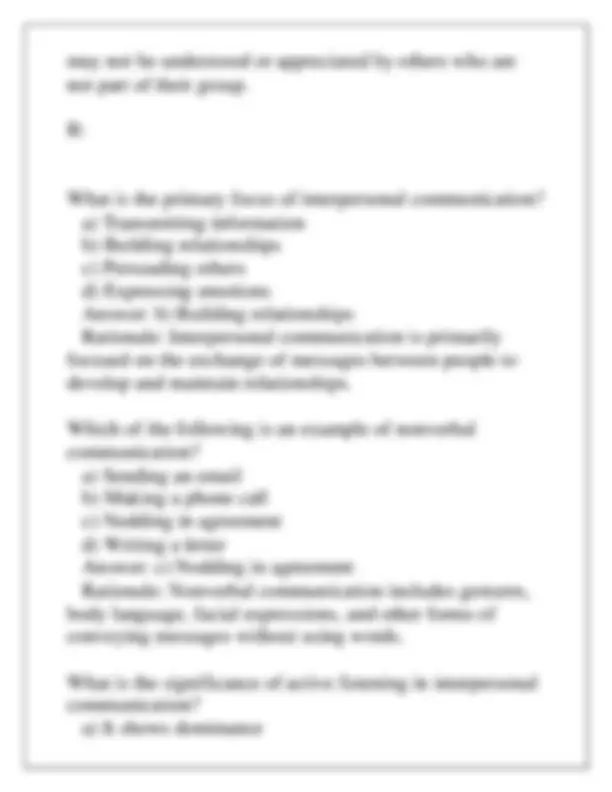
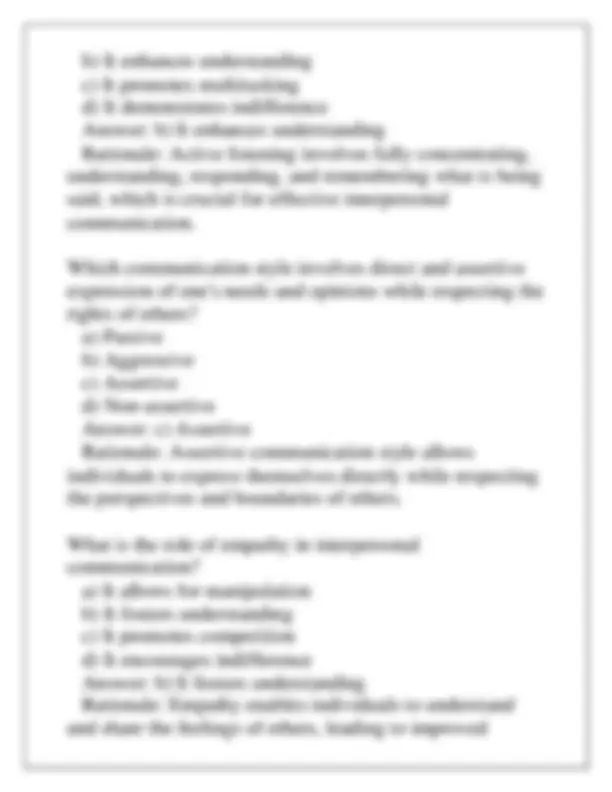
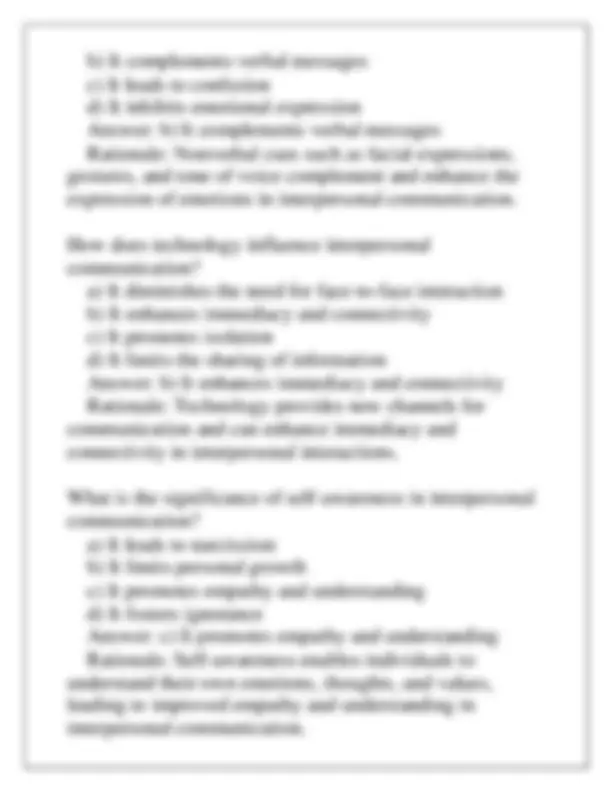
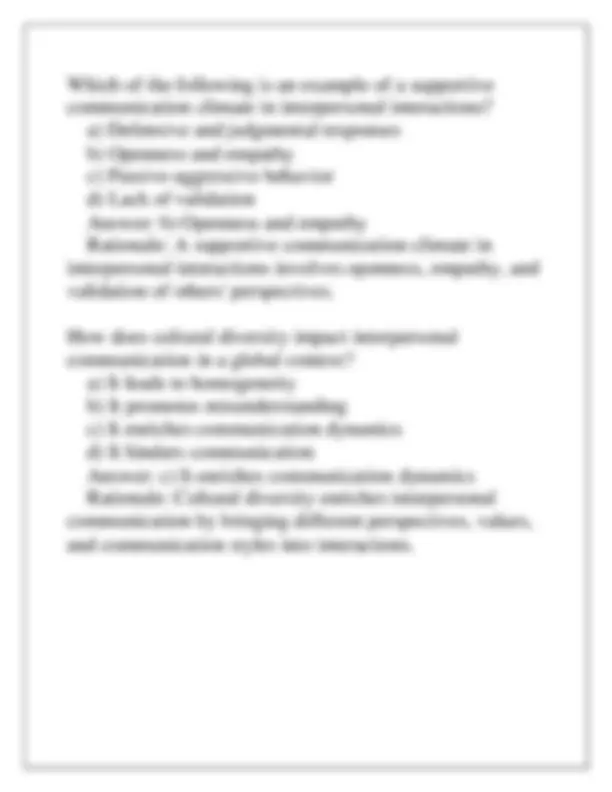
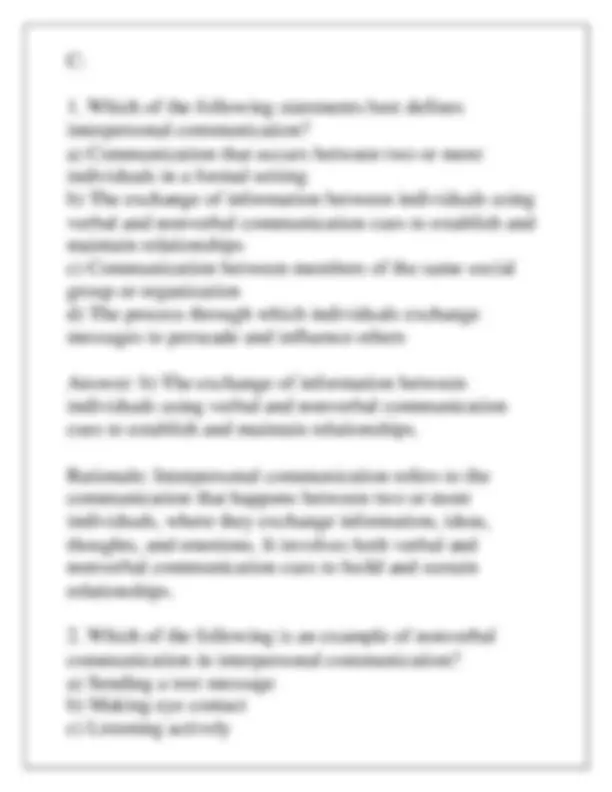
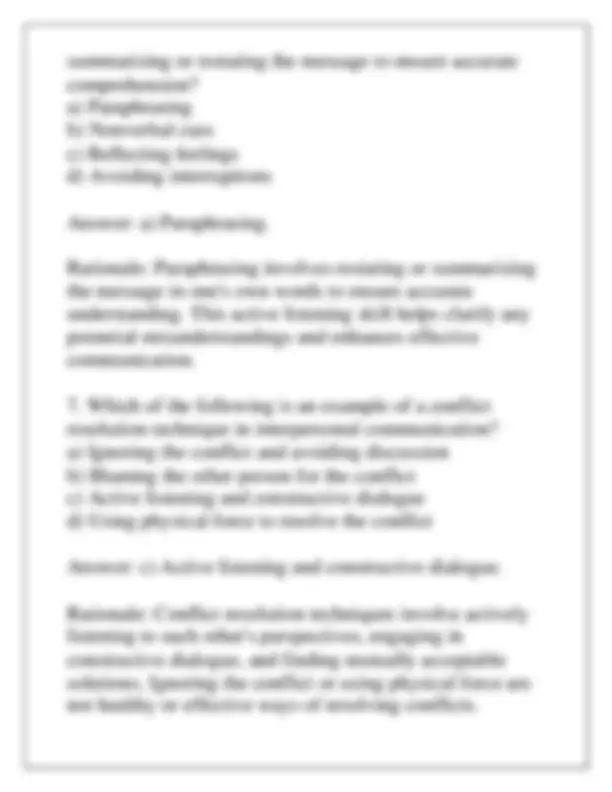

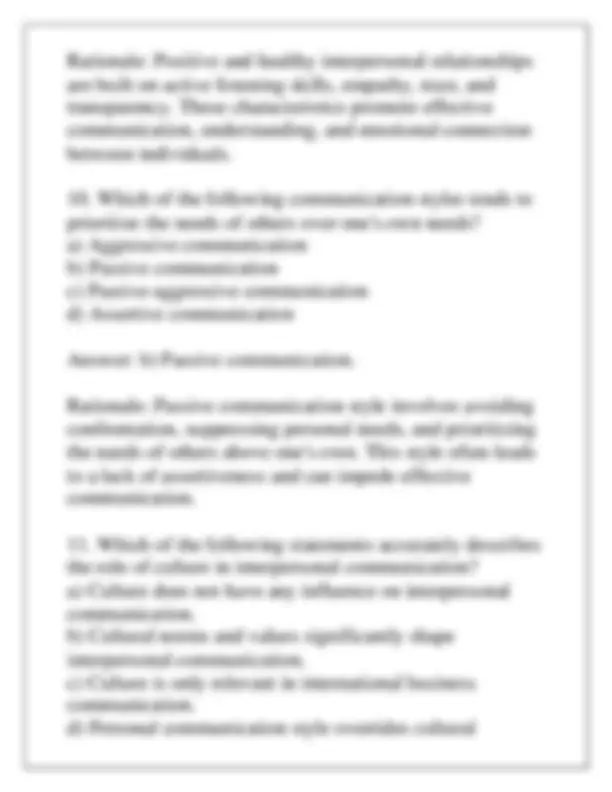
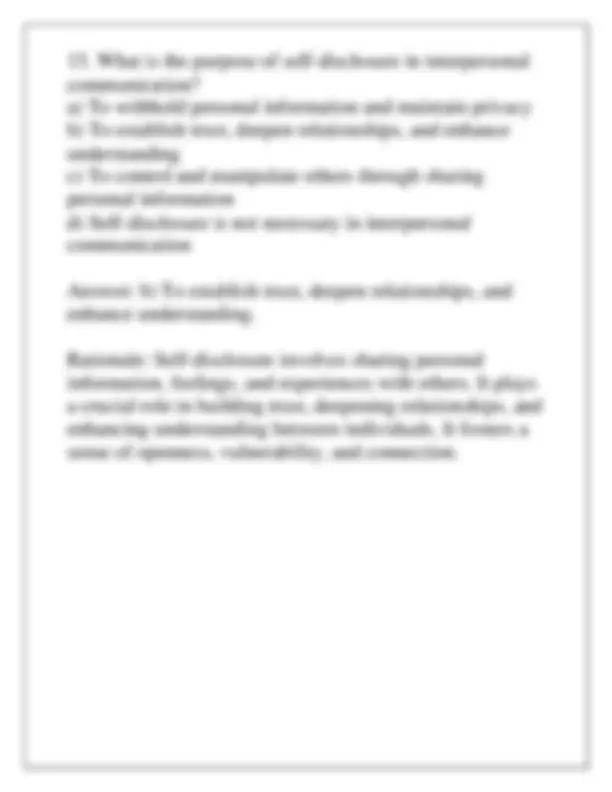


Study with the several resources on Docsity

Earn points by helping other students or get them with a premium plan


Prepare for your exams
Study with the several resources on Docsity

Earn points to download
Earn points by helping other students or get them with a premium plan
Community
Ask the community for help and clear up your study doubts
Discover the best universities in your country according to Docsity users
Free resources
Download our free guides on studying techniques, anxiety management strategies, and thesis advice from Docsity tutors
A series of questions and answers related to interpersonal communication, covering topics such as communication barriers, communication styles, feedback, and conflict resolution. rationales for each answer, explaining the reasoning behind the correct response. The questions and answers are designed to help readers understand the fundamental elements of effective interpersonal communication and develop the skills necessary to build and maintain healthy relationships.
Typology: Exams
1 / 18

This page cannot be seen from the preview
Don't miss anything!











may not be understood or appreciated by others who are not part of their group. B: What is the primary focus of interpersonal communication? a) Transmitting information b) Building relationships c) Persuading others d) Expressing emotions Answer: b) Building relationships Rationale: Interpersonal communication is primarily focused on the exchange of messages between people to develop and maintain relationships. Which of the following is an example of nonverbal communication? a) Sending an email b) Making a phone call c) Nodding in agreement d) Writing a letter Answer: c) Nodding in agreement Rationale: Nonverbal communication includes gestures, body language, facial expressions, and other forms of conveying messages without using words. What is the significance of active listening in interpersonal communication? a) It shows dominance
b) It enhances understanding c) It promotes multitasking d) It demonstrates indifference Answer: b) It enhances understanding Rationale: Active listening involves fully concentrating, understanding, responding, and remembering what is being said, which is crucial for effective interpersonal communication. Which communication style involves direct and assertive expression of one's needs and opinions while respecting the rights of others? a) Passive b) Aggressive c) Assertive d) Non-assertive Answer: c) Assertive Rationale: Assertive communication style allows individuals to express themselves directly while respecting the perspectives and boundaries of others. What is the role of empathy in interpersonal communication? a) It allows for manipulation b) It fosters understanding c) It promotes competition d) It encourages indifference Answer: b) It fosters understanding Rationale: Empathy enables individuals to understand and share the feelings of others, leading to improved
Answer: c) Collaboration Rationale: Collaboration involves working together to find a solution that satisfies the concerns of all parties involved in the conflict. What is the impact of gender on interpersonal communication? a) It has no influence b) It leads to misunderstandings c) It affects communication styles d) It promotes uniformity Answer: c) It affects communication styles Rationale: Gender can influence communication styles, language use, and nonverbal behaviors in interpersonal interactions. Which of the following is an essential component of effective feedback in interpersonal communication? a) Criticism b) Specificity c) Deflecting responsibility d) Vagueness Answer: b) Specificity Rationale: Effective feedback in interpersonal communication should be specific, constructive, and focused on behavior rather than personal attributes. What role does nonverbal communication play in conveying emotions in interpersonal interactions? a) It has no impact on emotional expression
b) It complements verbal messages c) It leads to confusion d) It inhibits emotional expression Answer: b) It complements verbal messages Rationale: Nonverbal cues such as facial expressions, gestures, and tone of voice complement and enhance the expression of emotions in interpersonal communication. How does technology influence interpersonal communication? a) It diminishes the need for face-to-face interaction b) It enhances immediacy and connectivity c) It promotes isolation d) It limits the sharing of information Answer: b) It enhances immediacy and connectivity Rationale: Technology provides new channels for communication and can enhance immediacy and connectivity in interpersonal interactions. What is the significance of self-awareness in interpersonal communication? a) It leads to narcissism b) It limits personal growth c) It promotes empathy and understanding d) It fosters ignorance Answer: c) It promotes empathy and understanding Rationale: Self-awareness enables individuals to understand their own emotions, thoughts, and values, leading to improved empathy and understanding in interpersonal communication.
d) Speaking in a foreign language Answer: b) Making eye contact. Rationale: Nonverbal communication includes all the behaviors and elements of communication that do not involve words, such as facial expressions, gestures, body language, and eye contact.
summarizing or restating the message to ensure accurate comprehension? a) Paraphrasing b) Nonverbal cues c) Reflecting feelings d) Avoiding interruptions Answer: a) Paraphrasing. Rationale: Paraphrasing involves restating or summarizing the message in one's own words to ensure accurate understanding. This active listening skill helps clarify any potential misunderstandings and enhances effective communication.
influences. Answer: b) Cultural norms and values significantly shape interpersonal communication. Rationale: Culture plays a crucial role in interpersonal communication by influencing norms, beliefs, values, and communication styles. It affects how individuals interpret messages, perceive nonverbal cues, and establish relationships.
essential for effectively managing conflicts within interpersonal relationships? a) Passive listening b) Emotional detachment c) Nonverbal communication awareness d) Conflict resolution and negotiation Answer: d) Conflict resolution and negotiation. Rationale: Effectively managing conflicts within interpersonal relationships requires conflict resolution and negotiation skills. These skills involve active listening, understanding emotions, finding common ground, and working towards a mutually satisfying resolution.